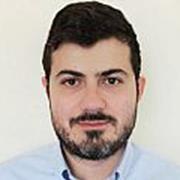Exploiting Synchronism To Achieve a More Biomimetic Interaction Control
There is evidence that animals exploit synchronism to simplify the control of their body and stabilize the interaction with the external environment; however, the mechanisms involved still evade our understanding. Currently, most model-based methods used to control robots and model and track animal behaviour use a projected dynamics optimization to regress the system parameters. Such an approach requires a dynamic reference behaviour and is susceptible to kinematic and representation singularities, making them computationally expensive and limiting their robustness. To address this issue, we have developed a passive controller characterized by a conservative observer, which allows multiple controllers to be superimposed without affecting stability while operating with extreme information delay and running at low controller bandwidth. These methods have been successfully applied in human-robot interaction for industrial, space, and medical robotics. In the future, it is expected that such an approach will allow the development of biomimetic control architectures capable of human-like interaction in complex variegated environments.





